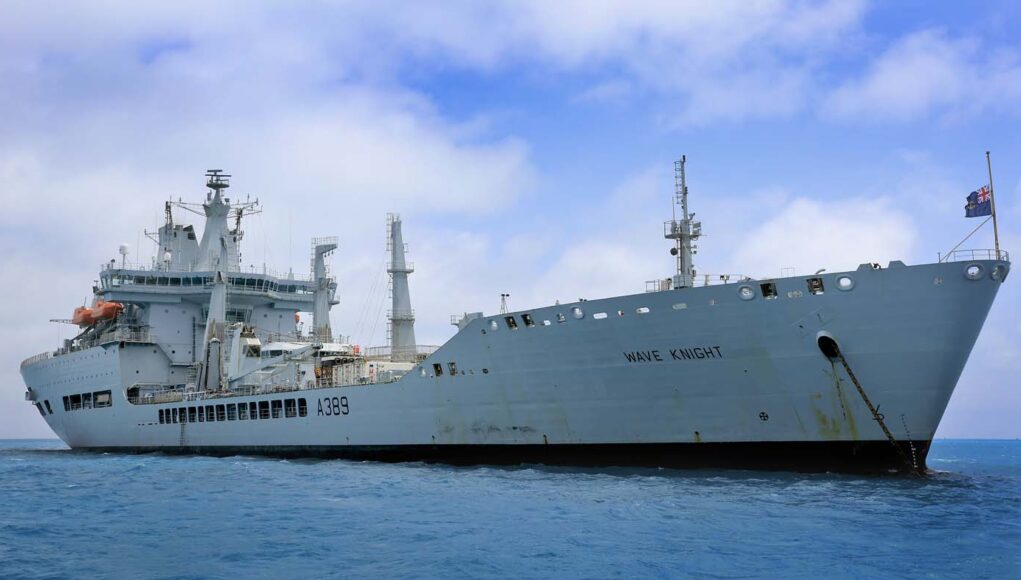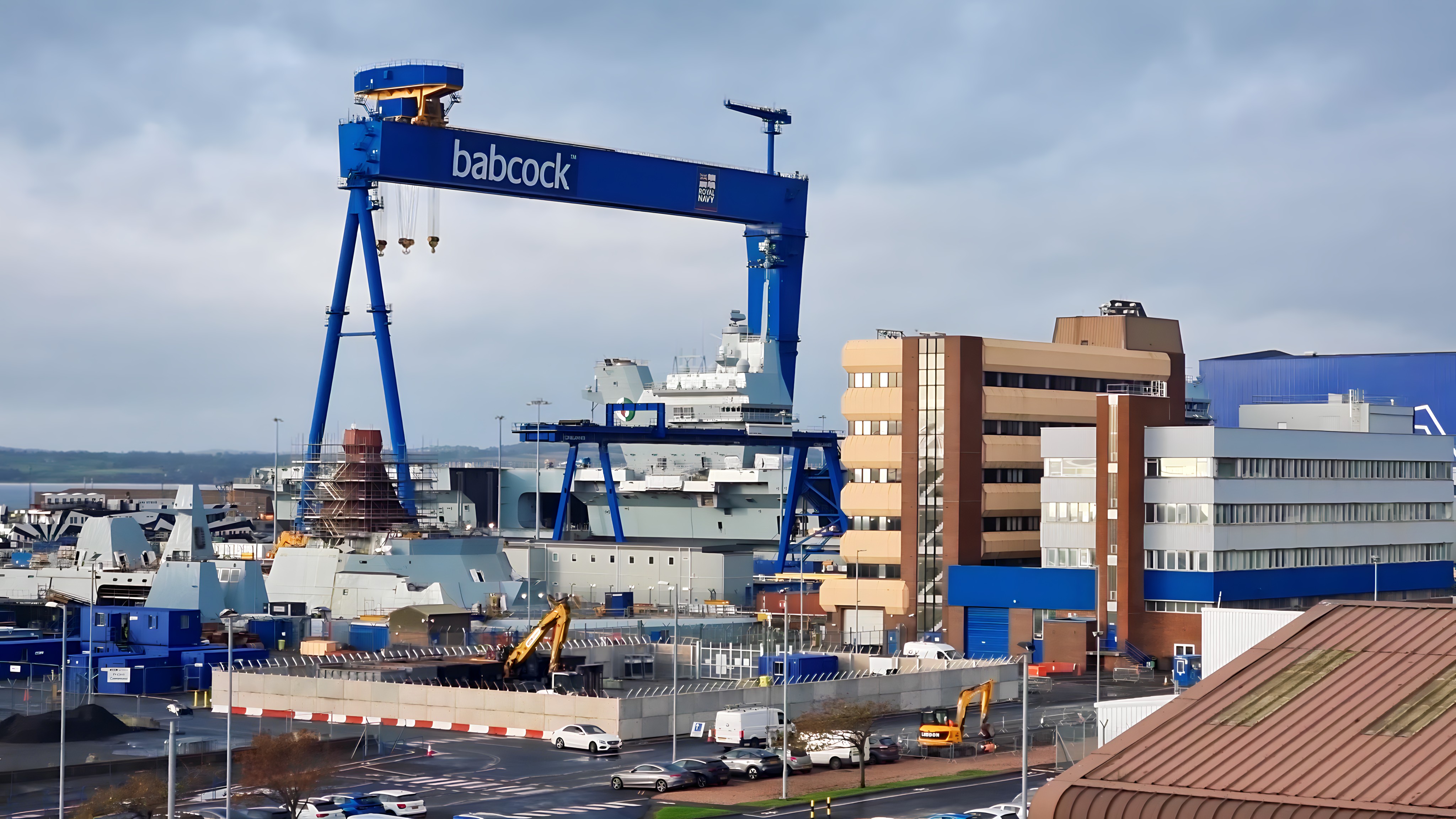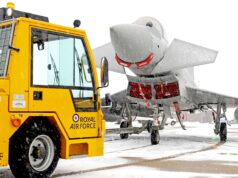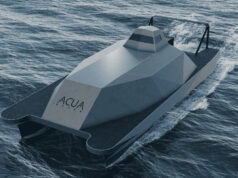The UK government has announced the retirement of the Royal Fleet Auxiliary’s Wave Class auxiliary oilers, RFA Wave Knight and RFA Wave Ruler, by March 2025.
This decision forms part of a broader Ministry of Defence (MoD) plan to transition to newer capabilities, save costs, and modernize the Royal Navy’s operational support fleet.
The two oilers, which have not been operational since 2017 and 2022 respectively, are currently in extended readiness. The MoD confirmed they were no longer due to return to sea before their planned out-of-service dates in 2028, making their early retirement a cost-effective decision.
“The Fleet’s operations and training will be unaffected,” said Defence Secretary John Healey in a Written Ministerial Statement. He added that the Tide Class auxiliary oilers, introduced in recent years, will assume the Wave Class’s role of refueling and supporting the Royal Navy’s vessels, including its aircraft carriers.
Cost Implications and Strategic Context
By retiring the Wave Class vessels three years ahead of schedule, the MoD expects to save part of the £150 million in defence cuts over the next two years. This decision contributes to an estimated £500 million in savings over five years, funds that Healey emphasized would be “retained in full in Defence” and reinvested into modernisation efforts.
“These ships have provided valuable service to the Royal Navy over many years,” Healey noted. However, he stressed the importance of transitioning to modern capabilities to ensure the Royal Navy remains effective in a rapidly evolving strategic environment.
Broader Defence Restructuring
The retirement of the Wave Class oilers is part of a larger restructuring effort that includes the early decommissioning of other aging assets such as the Type 23 frigate HMS Northumberland, the amphibious assault ships HMS Albion and HMS Bulwark, and the Watchkeeper Mk 1 drones. The decision underscores the government’s strategy to retire older platforms in favor of more advanced technologies.
“We face increasing global threats, including war in Europe and growing Russian aggression,” Healey told Parliament. “Difficult decisions are required to make the Armed Forces fit for the future.”
Legacy and Transition
First entering service in the early 2000s, the Wave Class vessels were designed to provide fuel, supplies, and logistical support for the Royal Navy’s global operations. Their retirement marks the end of nearly two decades of service.
With the modern Tide Class oilers now forming the backbone of the Royal Fleet Auxiliary’s replenishment capabilities, the Royal Navy is expected to maintain its ability to sustain operations at sea without disruption.
While the Wave Class ships will no longer sail under the Royal Fleet Auxiliary flag, their contribution to global deployments and exercises over the years is widely acknowledged as a critical chapter in the history of the UK’s maritime support fleet.
At the UK Defence Journal, we aim to deliver accurate and timely news on defence matters. We rely on the support of readers like you to maintain our independence and high-quality journalism. Please consider making a one-off donation to help us continue our work. Click here to donate. Thank you for your support!














Are they scrapping them or selling them?
I would imagine scrapping, no one will want to buy old fleet oilers.
This ships are not particularly old, I believe one of them was offered to Brazil when they bought HMS Ocean, maybe they will be interested if its for a knock down price. Maybe Australia would have use for them in the Pacific, I’d be surprised if they where scrapped altogether.
Navy Lookout is reporting that a South American delegation looked at Wave Knight in 2023
Unless there’s some major mechanical or hull issues I’d be really surprised if they’re scrapped. Purpose built modern AORs with double hulls, helo hangars, NATO standard kit etc aren’t cheap or easy to come by, and they aren’t life expired. There could be several navys that would happily pay more than the scrap value.
Portugal has a current requirement for two ships, replacing an ex-RFA Leaf tanker.
An EX Rover Class not Leaf – Blue Rover and was almost 50 years old. Single hulled and is not OCIMF compliant
I can understand this cut, we have a great fleet of modern fleet in the tide class, so in reality the replacement for these ships is already in place..and holding them at extended readiness for 4 years is pointless.
I can’t.
The Tides were bought to replace the Rover class, not these.
They could be spending money to pay and train
Crews for RFA vessels, and these could have been used elsewhere.
Gone to help save a paltry 500 million over 5 years.
Same old, same old.
Yes. We are talking peanuts here. They seem to be simply cutting the kit which hasn’t been to sea lately. Not showing a true understanding of our kit, why we have it and why we need to retain it.
Could not agree more. Although I would add its lost capability that we won’t get back. The reason we parked them up is we have no crews for them. We all know why. This round of cuts is only part of what I predicted in a previous post for the SDR.
One carrier will be mothballed while they quietly look for a buyer. No more F35. Here is thinking out the box, RFA to be subject privatisation
How about using some of that cash saved to give the RFA seafarers a well deserved pay rise and end the mass exodus of these undervalued personnel.
How about using some of that cash saved to give the RFA seafarers a well deserved pay rise and end the mass exodus of these undervalued and under appreciated personnel.
No problem with this part of the cuts, I would’ve sold one to Brazil when they bought Ocean. The other one on eBay etc. 🙂 The tides are plenty in terms of oilers.
4 is hardly plenty
It’s plenty when you have less than 20 ships in the navy.
Not if you are serious about supporting carrier operations worldwide.
Tides are plenty???? You have no idea. To complicated , to slow and kit is difficult to replace.
Whilst cuts are always disappointing as that are never replaced like for like, it has highlighted how many effective cuts there has been that have been hidden under the mothball banner, at large cost to the MOD which could have been spent else where..
So the Navy is losing 3 warships and 2 elderly RFAs.
In other news, largely absent from the article, we are also losing 31 RAF helicopters, 49 AAC Watchkeeper UAVs and, Healey might have added in a moment of honesty, 34 AS-90s, which were there just a few weeks ago and now are suddenly gone, no more.
So, 118 equipments axed, of which 5 are RN. A couple of observations.
Why are these suddenly being announced now, six months before the SDR? Surely the SDR is there to take the big overview of where we are, what we need and what we can dispense with. Why is the DS jumping the gun and scrapping things? Smacks, yet again, of the Treasury dictating military things, regardless of the bigger picture (war in Europe, increasing Chinese power and ambitions, the CRINKs working together as a de facto military alliance).
The idea that we are clearing the decks to enable a new dawn of ultra-modern equipment is surely just political flannel. Normally, nations take kit out of service when, and not before, the new replacement kit is delivered. That is how virtually all our NATO allies do it, Tornados and F-16s retained until replaced by F-35s, many different corvettes and OPVs kept in service until the new Euro patrol corvette is ready, etc.
Today’s announcement is the opposite: we are scrapping a heap of kit years before any successor arrives. The Chinooks will just about be replaced by the 14 Chinook ERs (extended range) on order, but it will likely be about 6 or 7 years before they are all in service. The T23 frigate may well not be replaced until T26#7, so about 9-10 years away. There is no UAV replacement for Watchkeeper on the drawing board, so not matter how quickly we start acquiring one, it is going to be years before they are all replaced. There is no timetable for the NMH, so we lose 17 transport helis and have to hope that the NMH gets the green light soon, but our rotary transport lift will be gapped for years.The AS-90 replacement, Boxer RCH 155, is supposed to start entering service in 2030, which is probably pretty optimistic. That means an 8 or 9 year gap until all the AS-90s are replaced. Our field artillery cover for the 2 AI bdes is reduced to 12 operational second-hand Archers.
All that has happened is that all these capabilities have just been gapped for as many years as the Treasury accountants deem necessary. There is no sign of any strategic military overview here, such as…. err, with the war in Ukraine and the many threats, we better hang on to all useful kit until the replacement stuff arrives. Healey might as well have got a Treasury Minister to read out his statement, because it looks to be all dictated by a Treasury hunt for cost cuts.
It is odd and unusual that all the stuff withdrawn gets scrapped. Even older kit can play a role in war, as Russia and Ukraine are showing, it may not be state-of-the-art, but it is a heck of a lot better than nothing.
It would be prudent to keep the Albions and Waves in reserve, in case we suddenly need them. Ooh, ah, pundits on here frequently say, but keeping a ship alongside costs money. Sure it does, but a fraction of the cost of crewing and maintaining an operational warship or RFA. We conveniently forget how the USA came to our aid in 1941 (?) with 50 elderly destroyers mothballed from WW1, which enabled us to maintain a basic convoy system.
We may need to do an amphibious operation one day, who knows, would be rather useful to have some amphibious assault ships to call on. We might lose a tanker or two in any hot war, or even just to Houthi missiles, the Waves would then be of critical value.
Very disappointed with Healey’s actions today and his rather phony hint of jam tomorrow. We know pretty much what new kit is in the pipeline and how many years away delivery is. There is no jam tomorrow, there is just the eventual replacement of some of the equipment over the next 5-8 or 9 years.
A bit pathetic really.
Well said. With conflicts spreading keeping older capabilities as replacements is sound strategy. We seem to be equipping our armed forces on the basis that their won’t be any wars to fight, that if there are they will last less than two weeks and that we will suffer no losses.
Well said. For me they are drip feeding the SDR. There is worse tocome.
Thes should have gone years ago. Hell we could have flogged one to Brazil when they bought Ocean.
Surprised Fort Victoria hasnt gone too…
More destruction of our pitiful defence resources, do they want Russia in London by Christmas, we have nothing left to stop them except that they would probably die laughing at our spending money on supporting other countries green bullshit, the diversity bullshit and all the rest shortly before they take over and shoot everyone they don’t approve of (most of those we are wasting money about)
Being mad dogs and Englishmen used to being led by donkeys and losing every battle until the last one, it’s nice to see everything is snafu.
Twat
Shame on the labour government, what’s no.1 in policy! Disgraceful
We shouldn’t be scraping any navy vessels not at this time especially if Putin decides to try and attack the UK.
This government is trying to ruin this country and its military again.
Why scrap them. They’ve still got life left in them…although no crews.
Just hold them in deep reserve. Reactivate them if a major war breaks out.
Although to be fair we have so few warships now if a major war broke out the RN would only have to lose 6-8 escort warships to be combat ineffective and defeated. So not many ships to refuel.
What brainless wonder do we have in control of of our armed forces? Bet he’s or her has never been in the forces. Don’t get rid of an item until you have an operational replacement. Get guidance if you don’t understand. Civvies….useless.
Any chance these can be gifted to Ukraine? Motherships for naval drones in places away from the black sea. The survey ship in the Irish sea could have been tackled to the Ukrainians in this way.
The Wave’s are useful assets which not only afford mass to the RN Fleet but also NATO. The 4 tankers that are left are not going to meet the basic needs of even the small RN of today. One for the Carrier, one for FOST and one available for supporting the North Atlantic patrol and of course should we ever get escorts that need to go some place they too need tanker support. So even the 6 was short as at times the RN have had no tanker available. The Waves are good vessels which can also supply Air assets etc. Short sighted as always and the Service Leaders need a real kick in the pants.
Worry about Russian, they are losing men hand over fist to gain but a few yards. They are little threat to the UK or NATO really in their current state. Its just a meat grinder in Ukraine on both sides. Such a waste of human life for some nutter’s idea of a threat! Sad so Sad but the UK presently is in a poor position and no longer No2 in NATO really with such poor kit.
I advocate small forces but ultra modern kit and a big reserve. ready when needed. The Fllet is different as there is a lot of coast to cover and we are just not doing it well presently.
Shame on the leaders for poor management and wasted funds over the past years.
I would imagine that they will be sold on (not scrapped) Brazil have shown interest in these vessels on more than one occasion so it quite possible they will head South, maybe to tie up with former HMS Ocean.
I think scrapped is quite a glamorous headline!